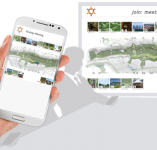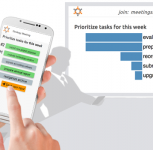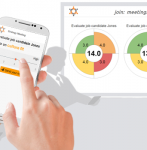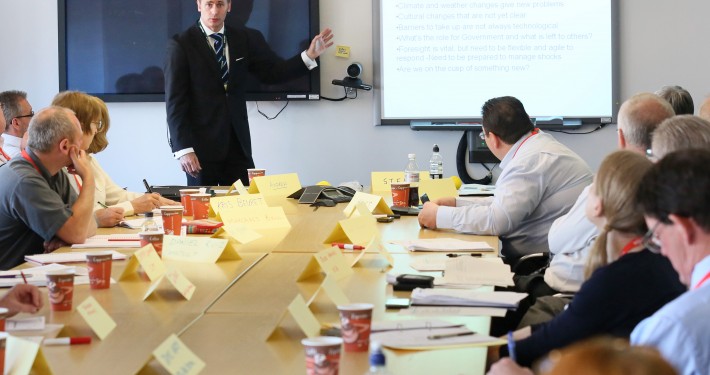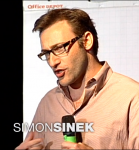While crowdsourcing has recently become a buzz-term, it is important to remember that face-to-face meetings and brainstorms have been using the same tactic for much longer. The general purpose of a meeting is to tap into and share the relevant collective information that all meeting participants can contribute.
Using mass outreach to solicit information, often through the internet, has become a huge resource for content and customer feedback. Entire companies (Wikipedia, TripAdvisor, Yelp, etc.) have been built around user-generated content resulting in sites that provide the most accurate possible information crowdsourced online.
Collective Intelligence
When questioning the value of meetings, it is important to realize how much better two heads (or five) are than one.
This concept has come to be known across many fields as “collective intelligence” and can be key to understanding and mastering consensus decision making. One of the great examples of collective intelligence dates back to Francis Galton at a county fair where the crowd was allowed to guess the weight of an ox in order to win it. Not surprisingly, no single person’s guess was very close to the true number. Yet, when the numbers were averaged, the result was much closer than any individual guess. The collective intelligence even provided a better answer than the cattle experts. The same principle can be applied to generating the best decision or strategy within a meeting.
Crowd Capital
The purpose of meetings should not only be to share ideas but fill in the gaps between them in order to generate new strategies and best options.
There is an emergent value in collective intelligence that is often more than what any one person, even with all the time and resources in the world, would be able to accomplish by themselves. In the organizational communication world, this is called crowd capital and exists in any meeting room.
What is most important about effectively running a meeting is to tap into this resource. MeetingSift attempts to do just this by generating real-time displays of the collective intelligence sitting around the meeting table.
3 Steps to Encourage Information Sharing
While what crowdsourcing has come to mean is generally defined by much much larger pools of input than what exists in a meeting room, there are steps that can be taken to make the flow of information in even a small group more open and collaborative. MeetingSift can provide critical numbers and easy-to-read infographics for any size group of participants but many of the results, regardless of the number of people involved, are dependent on how the information is asked for. Because greater sharing results in more accurate collective intelligence, make sure to consider these aspects of your meeting and how they relate to the information you are trying to generate:
Step 1: Structure & Timing
Always schedule adequate time for discussion and sharing of ideas in the meeting. Often the simple mistake of leaving questions for the end of a meeting can result in a lack of willingness to bring up important information. This is generally the time when participants are most removed – usually looking forward to their next agenda item – and least likely to share a potentially valuable idea. Without proper time given to communicating ideas, even a large group would not be able to effectively share their thoughts. MeetingSift greatly reduces the time spent collecting information but at what point that information is asked for is up to the facilitator of the meeting. Be strategic when planning your discussion periods.
Step 2: Recording Content
Make sure there is a effective method of recording any information shared. Crowdsourcing generally creates an online database to record their user generated content, why not use MeetingSift to do the same in your meeting. Too often, ideas and thoughts are lost in brainstorms due to the number being put forth. Either making sure there is a person (preferably a fast typer!) responsible for recording any brainstorm or have participants submit their ideas electronically through MeetingSift so that a report of all brainstorms and votes can be automatically generated.
Step 3: Process
Think carefully about the questions you ask and content you are trying to generate from your meeting. Read our post from last week on consensus decision making strategies for ideas of what kind of data may be most effective for the questions you are interested in. Keep in mind that facilitation of an effective process is unique to every meeting and a key factor of how to successfully generate ideas.
The Whole is Greater Than the Sum of Its Parts
The basic principle behind both meetings and crowdsourcing is that by engaging multiple contributors to share what information they have can result in a much greater amount of knowledge than the sum of all the individual pieces of information. Using these tools can help turn a meeting room into a space much more open to the flow of information and ideas between group members, regardless of the number of participants. While we recommend using MeetingSift if your goal is to create this kind of group engagement, it is the facilitator’s duty to create a space where it is possible.
LEVERAGE THE CROWD CAPITAL AT YOUR MEETING
The basic principle behind both meetings and crowd sourcing is that by engaging multiple contributors to share what information they have can result in a much greater amount of knowledge than the sum of all the individual pieces of information.
Using MeetingSift can help turn a meeting room into a space much more open to the flow of information and ideas between group members, regardless of the number of participants and their status.
The Six Most Common Types of Meetings

MeetingSift's easy to use collaboration platform for meetings helps you run more productive meetings, with higher engagement, better decision making, and more consistent follow up.





